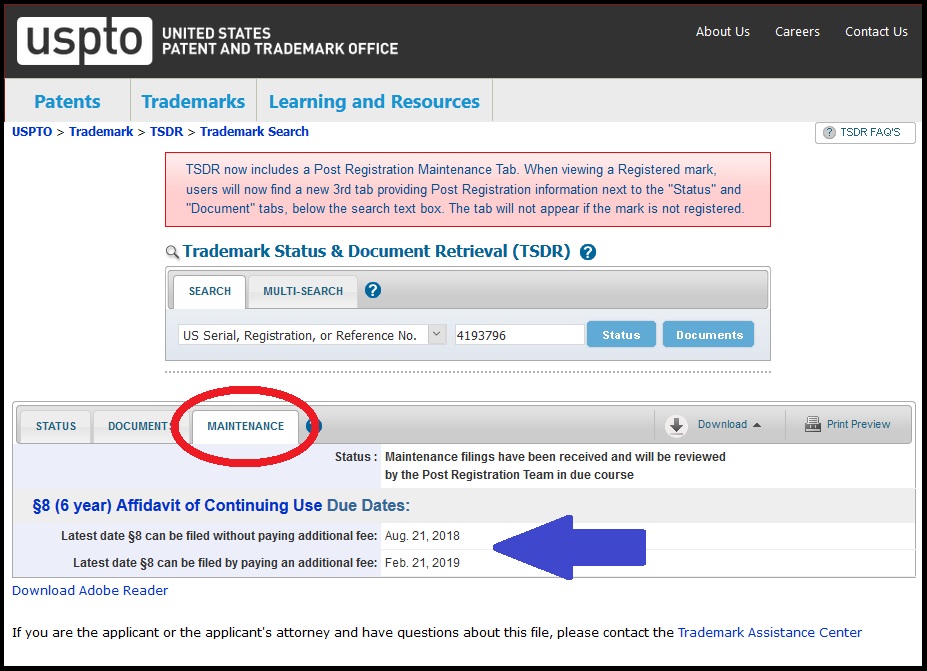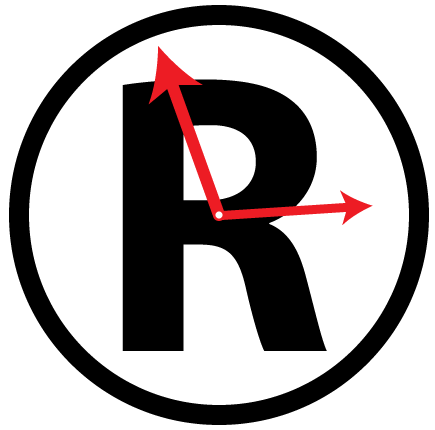How long does a trademark last? What do you need to do to keep your trademark? Here is some insight into the life of a trademark, how long it lasts, and renewal process and deadlines.
So you have a trademark, are using the “circle-R” to show it off, and now wonder how long it will last, or you’re wondering how long a competitor’s trademark lasts. Generally, trademarks are good for so long as they’re used. In fact, a trademark need not be registered to be a valid or enforceable right. So, the real question is how long does a trademark registration last? Short answer: 10 years. Slightly less short answer: 5+5 years then every 10 years.
Duration of U.S. Trademark Registration
There are certain time periods that are important to keeping a U.S. federal registration alive. (State trademark registrations may vary, see below for Florida.) They include the application period, the grant date (year zero), five years after registration, and every ten years after the grant date. For simplicity, we’ll break them down into three discrete time frames, and at the end we’ll stitch them together to see the overall life of a trademark. Let’s talk about the importance of each period, why each matters, and what it takes to ensure a trademark registration is maintained.
Period 1: Application 
This is the time between when you file a trademark application and when the registration issues. It lasts for about eight months to a year, although it could take longer if the USPTO trademark examiner issues an office action refusing to register the mark. The real key here is the end of this time period: The date you secure your trademark registration. That’s why I denoted it as time zero and not the date of filing of the application. Again, the application period should last approximately one year, give or take a few months.
Period 2: First 10 Years
A trademark during the first five years of its life is essentially in its infancy. It’s like a baby trademark. It hasn’t fully matured yet and is susceptible to attack from competitors or other trademark owners. (I will get into incontestability—grown up trademarks—in later post.) Here is where things are a little confusing. Although a registration lasts for 10 years, during that first ten years there’s a checkpoint called the Section 8 affidavit of continuing use. The USPTO wants to make sure you’re still using your trademark after five years, since a lot of brands don’t make it to their fifth birthday.
Section 8 Affidavit
Just before a trademark turns five years old, the USPTO will send a notification to you letting you know that the time has come for the mark to graduate to the next period of its life, through filing what is called a Section 8 affidavit. (Referring to Section 8 of the Lanham Act, and codified at 15 U.S.C. § 1058. If you really want to read the clunky language our esteemed political leaders write, you can read the statute.) But in plain English, the law says that a trademark holder must file an affidavit (or declaration) before the end of the sixth year to keep a registration alive. Thankfully, there is now an easy way to monitor the deadlines. The USPTO’s Trademark Status & Document Retrieval (TSDR) system has a “MAINTENANCE” tab that displays the due dates:

As of December 2017, the filing fee for a Section 8 affidavit is $125. If you forget to submit an affidavit within the first year, you still have an additional six months to submit the required affidavit, but the USPTO will also charge you an “oops, I forgot to file on time” fee of $100.
You can also help strengthen your registration by filing a Section 15 declaration of incontestability together with your Section 8 declaration. It’s like a regular trademark, but with some armor to protect it from attack. I’ll cover the importance of Section 15 declarations in another post.
Renewal Application
Things get pretty simple after the Section 8 affidavit. A renewal application must be filed before the end of the tenth year to keep the registration alive. Once you reach this timeframe, it will essentially be the same procedure for every subsequent ten year time period. So the short answer to the question about how long a trademark registration lasts? 10 years. 15 U.S.C. § 1058(a)(2). The only wrinkle is the first 10 year period when the owner must file the Section 8 affidavit between years 5 and 6, otherwise it is essentially the same.
Similar to the process for the initial trademark registration, a renewal application must be submitted with specimens to prove use of the mark in commerce. Not surprisingly, the USPTO collects a fee for the privilege of renewing a trademark. Currently, it’s $300 per class. Otherwise, that’s it for another 10 years. No more mid-life affidavits, just the renewal application.
Period 3: Successive 10 Years / Cancellation
If your mark made it past its 10th birthday, congratulations, you’ve surpassed most new brands and businesses! Now, it’s a simple matter of renewing the registration each decade.
It is also worth noting that a trademark registration, like an eBay auction, is “good ’till canceled” (or no longer used). Again, a registration should not be confused with the trademark right, which is based on use. Registration provides a trademark owner with additional and stronger rights to enforce it, and also avoid it being attacked, but a trademark lasts for as long as its used (with some minor exceptions, like genericide).
Putting it All Together
So if we combine all the above periods into one timeline, this is what the overall process of trademark registration and renewal looks like:

And for the spreadsheet enthusiasts, here’s what the above data looks like in tabular form:
| Event | Period | Year | USPTO Fees (per class) |
|---|---|---|---|
| * A Section 15 affidavit of incontestability is also optional (and recommended) at this stage for an additional filing fee of $200 per class. † An additional fee of $100 applies for a late filing (e.g. top of the normal filing fee). This grace period is usually 6 months after the deadline. |
|||
| New Application | Pre-grant | -1 | $225 – $400 |
| Registration Granted | Grant | 0 | $0 |
| Section 8 Affidavit* | First 5 Years | 5 – 6 | $125† |
| Renewal Application | First 10 Years | 9 – 10 | $300† |
| Renewal Application | Next 10 Years | 19 – 20 | $300† |
Duration of a Florida Trademark Registration
Finally, if you’re curious about state trademarks (yes, they exist in addition to federal marks), each state’s laws will vary. In Florida, the timelines are very straightforward. Florida’s trademark statute requires renewal every five years years after its date of registration. § 495.071, Fla. Stat. (2017). Pretty simple.

One comment